MISSISSAUGA, ON - Subaru Canada, Inc. (SCI) today announced the release of the completely redesigned 2014 Subaru Forester. While still maintaining its strong reputation for safety, performance, dependability and versatility in the compact SUV segment, the new Forester is an evolution rather than a revolution in its redesign as it debuts a bold exterior design and roomier interior along with improved performance and impressive fuel economy.
For the 2014 model year, Forester will jump to the head of its class in full-time all-wheel-drive fuel economy as Forester 2.5i models newly equipped with Subaru's Lineartronic CVT (continuously variable transmission) achieve manufacturer-estimated fuel economy ratings of 6.2 litres per 100 kilometres on the highway. A new 2.0-litre direct injection twin-scroll turbocharged SUBARU BOXER engine producing 250 horsepower will be introduced on Forester 2.0XT models, while the naturally aspirated version will continue with the 2.5-litre horizontally opposed SUBARU BOXER engine producing 170 horsepower. Standard Subaru symmetrical full-time All-Wheel Drive continues to set Forester apart from segment competitors.

Bold Design with Added Function
The 2014 Forester preserves the optimal blend of SUV capability and spirited handling that have made it one of Subaru's bestselling models since its introduction in 1997. Hawkeye headlights and a slightly taller, hexagonally shaped grille anchor the bold front-end design. Forester 2.0XT models gain an exclusive, aggressive looking sport-designed front bumper along with mesh-style grille and chrome-rimmed fog light bezels.
All models feature black side cladding and body-coloured door handles. Forester's sporty design incorporates several functional benefits. All models employ an aluminum hood for lighter weight. Not only has the A-pillar moved forward, but frontward visibility - a strong point on the outgoing model - has further improved. New partitioned front-door side glass, along with door-mounted mirrors, help improve side visibility and reduce potential wind noise. The hood scoop on Forester 2.0XT models has been replaced by under-hood ducting, further enhancing forward visibility while supplying air to the turbo model's intercooler.
Increased Comfort and Versatility
Built on a new platform featuring a 25-millimetre longer wheelbase, vehicle length and width has increased by just 35 and 15 millimetres, respectively, yet the 2014 Forester gains notable gains in roominess thanks to Subaru's mastery of efficient vehicle packaging. This platform also pays dividends in manoeuvrability - a longstanding Forester hallmark - evidenced by the vehicle's tight 5.3-metre turning circle.
The all-new interior design capitalizes on increased roominess by also emphasizing a feeling of greater spaciousness. A longer distance between the front occupants and instrument panel give the Forester a more open feel. All models feature a standard tilt/telescoping steering column.
Thanks to a new type of cushion spring, front seats have become more comfortable for longer trips while select 2.5i models feature a reclining rear seatback and a rear seat folding centre armrest with dual cup holders. To greater accommodate all shapes and sizes, the front seat hip point is 29 millimetres higher than before. The driver's seat height adjustment offers an additional 15.5 millimetres of range along with 32 millimetres greater fore-aft seat cushion adjustment range.
The longer wheelbase and specially shaped front seatbacks contribute to comfortable rear-seat legroom. Subaru also improved comfort and room for the centre rear-seat passenger by raising the hip point by 36 millimetres, lowering the centre tunnel by 68.8 millimetres and reducing the length of the front centre console by 100 millimetres. Combined with increased hip and shoulder room, the 2014 Forester boasts a more comfortable backseat for three passengers. Rear doors also open wider for ease of entry and exit. This, along with relocated tether anchors, makes for easier installation of child seats.
Flattening the load floor even further in the 2014 Forester has increased maximum rear cargo capacity to 2,115 litres with the standard 60/40-split rear seats folded.
Contributing to Forester's impressive fuel economy ratings are a new six-speed manual transmission in 2.5i models and an available Lineartronic CVT.
Dynamic Performance and Maximized Efficiency
Forester 2.5i models continue with the double overhead camshaft (DOHC) 2.5-litre SUBARU BOXER engine that debuted on the outgoing model. This engine produces 170 horsepower and 174 pound-feet of torque. Matched to either the standard 6-speed manual transmission or the CVT, the 2.5-litre engine gives the Forester excellent response in everyday driving with emphasis on low and mid-range torque.
Turbocharged 2.0XT models debut with a new turbocharged variant of the FA-series SUBARU BOXER engine first introduced in the Subaru BRZ sports coupe. In 2014 Forester 2.0XT models, the 2.0-litre 4-cylinder SUBARU BOXER engine uses a combination of direct fuel injection, high compression (10.6:1), Subaru's Dual Active Valve Control System (D-AVCS) as well as turbocharging with an intercooler to achieve outstanding performance and high efficiency. The Forester 2.0XT engine produces 250 horsepower at 5,600 rpm accompanied by a broad torque curve that peaks at 258 pound-feet over a 2,000 to 4,800 rpm engine speed range.
The CVT in the 2.5i models and high-torque CVT in 2.0XT models use new adaptive control. Based on vehicle input received by the transmission control module, pulley gear ratios are continually optimized based on driving preferences and road conditions. Forester 2.0XT and Forester 2.5i Convenience, Touring and Limited Package models also include feature paddle shifters for the CVT, while the entry level Forester 2.5i with the CVT includes a driver-selectable low shift mode, which can provide additional engine braking when travelling down a grade. All 2014 Forester models feature a new low-oil level indicator.
SI-DRIVE: Better Control, Better Performance
Exclusive to 2.0XT models, Subaru Intelligent Drive (SI-DRIVE) is an engine performance management system that allows the driver to tailor the vehicle's driving characteristics by choosing among three selectable modes - Intelligent, Sport and Sport Sharp - by using a switch on the steering wheel.
With Intelligent mode selected, SI-DRIVE provides a more relaxed throttle response curve, making it useful for commuting in traffic. Sport mode provides quick throttle response, powerful linear acceleration and accesses a 6-speed manual mode with steering wheel-integrated paddle shifters. In Sport Sharp mode, SI-DRIVE modifies the engine's electronic throttle mapping to deliver even quicker throttle response and provides an 8-speed manual mode for the CVT.
Agile Handling, Smooth Ride
The 2014 Subaru Forester builds on the reputation for agility and smooth ride quality firmly established by previous Forester models. The front strut suspension and double-wishbone rear suspension have been retuned for the 2014 model year; the rear suspension gains pillow-ball joint mounts, while pillow-ball bushings have been used to replace the rubber lateral link bushings previously used on the outer rear of the lateral link. Newly refined sport-tuned suspension delivers sharper handling response, along with exclusive chassis enhancements. Forester 2.0 XT use larger brakes than 2.5i models with ventilated front and rear rotors.
For all 2014 Forester models, a new Electric Power Assisted Steering (EPAS) system contributes to fuel efficiency and also provides excellent feedback to the driver. The Forester 2.5i entry model now rides on standard 17-inch steel wheels, up one inch from the outgoing model. The Convenience Package has standard 17-inch wheels and 2.0XT models exclusively use black 18-inch alloy wheels, machine finished with a high-relief design.
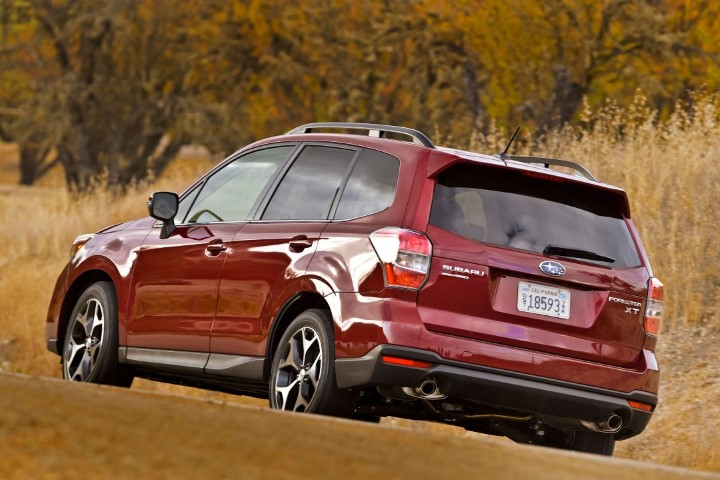
Standard Subaru Symmetrical Full-Time All-Wheel Drive
The 2014 Forester is available with two versions of Subaru symmetrical full-time All-Wheel Drive, which make all-wheel-drive traction available all the time, regardless of speed, gear or conditions. Forester 2.5i models equipped with the 6-speed manual transmission use a viscous-coupling limited-slip centre differential that distributes power 50/50 for well-balanced handling at all speeds.
In all Forester models with an automatic transmission, an electronically controlled Multi-Plate Transfer clutch system actively manages power distribution based on acceleration, deceleration and available traction. This system distributes power 60/40 front to rear under normal conditions, but balances power 50/50 for maximum grip when slippage is detected. Control logic in this AWD system enhances stability by monitoring individual wheel speeds and reacting more quickly to wheel slippage. The control logic also helps to improve tight corner braking, contributing to more neutral handling response (reducing understeer and oversteer).
All CVT models will also gain a brand new X-Mode and Hill Descent Control feature that works in conjunction with Subaru symmetrical full-time All-Wheel Drive, the SUBARU BOXER engine and the brake system to provide extra control in slippery driving situations. This new feature allows the vehicle to control the brakes, throttle and other engine components to ensure improved traction in difficult driving situations.
Vehicle Dynamics Control
Standard on every Subaru, the Vehicle Dynamics Control system monitors and analyzes if the vehicle is following the driver's intended course via an array of smart sensors. If the vehicle approaches the limits of stability, the AWD torque distribution, engine output and brakes at each wheel adjust automatically to assist in keeping the vehicle on course. A Vehicle Dynamics Control 'off' switch is useful for driving out of slushy roads, deep snow or very loose gravel. The 'off' position deactivates the system's torque-reduction control, while the ABS traction control remains active.
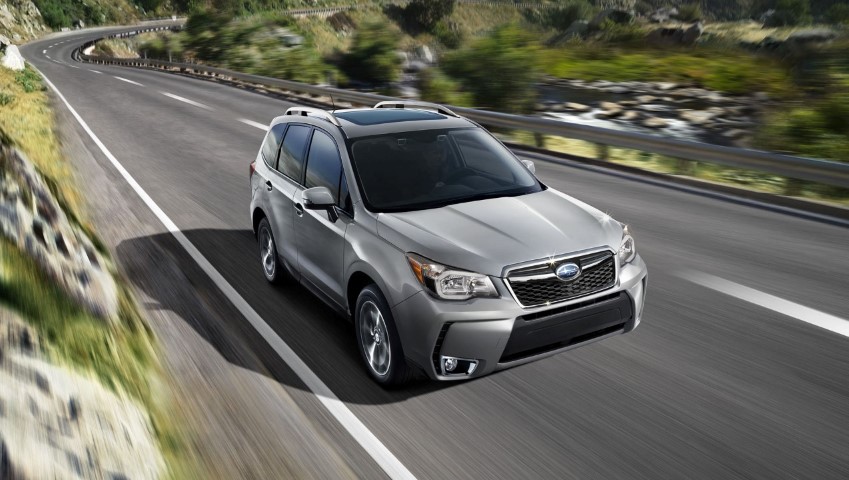
Forester: Building on Proven Strength in Safety Leadership
The Subaru Forester has established a distinguished reputation for safety, backed up by achieving the Insurance Institute for Highway Safety TOP SAFETY PICK rating over many years. The 2014 Forester builds on that record and continues to be built around the company's proven ring-shaped reinforcement frame safety structure. With a front-end configuration that disperses collision energy in three directions, this design forms a series of rings around the passenger compartment, providing protection in a variety of collision types. High-tension steel side-impact door beams and impact-absorbing foam materials enhance side-impact safety performance.
New safety features for all 2014 Forester models include anti-whiplash front seats, a driver's knee air bag, Brake Override and an impact-sensing fuel system cutoff. The Brake Override system cuts engine power if the driver applies both the brake and accelerator beyond a certain threshold. During airbag deployment, the new impact sensor cuts fuel supply to the engine.
The extensive roster of dynamic safety technology continuing from the outgoing model includes standard 4-wheel disc brakes with Subaru's four-wheel, four-channel, four-sensor Anti-lock Braking System (ABS), Vehicle Dynamics Control (VDC) electronic stability system as well as Subaru symmetrical full-time All-Wheel Drive and Brake Assist. In emergency braking, drivers usually apply less force than needed even when reacting quickly. Brake Assist detects how quickly the driver has pressed the pedal; if pedal velocity exceeds a certain level, Brake Assist applies system hydraulic pressure up to the ABS limit to help increase braking effectiveness.
Standard passive safety technology includes the Subaru advanced frontal air bag system (SRS), driver and front passenger seat-mounted side-impact air bags, and standard side curtain air bags. A rollover sensor can deploy the side curtain air bags if it detects a potential vehicle rollover.
EyeSight Driver-Assist System
The 2014 Forester will offer Subaru's new EyeSight driver-assist system, which debuted on 2013 Legacy and Outback models. This stereo camera-based system, developed by Subaru, provides a detection angle wider than that of radar-based systems. EyeSight's preventative safety technology - which acts as a second set of eyes for the driver - integrates Pre-Collision Throttle Management, Vehicle Lane Departure and a Lane Sway Warning, Lead Vehicle Start Alert as well as Adaptive Cruise Control and Pre-Collision Braking. These latter two features are especially noteworthy as the 2014 Forester is the only vehicle within the compact SUV segment to offer them.
New Amenities for Greater Functionality and Convenience
The 2014 Forester debuts new amenities and conveniences along with more upscale luxury features on higher trim levels. The naturally aspirated Forester 2.5i will be available in the entry level model as well as a Convenience Package with a PZEV option, a Touring Package, and a Limited Package with an EyeSight option. The turbocharged Forester 2.0XT Touring is also available with the Limited Package that can add an EyeSight and Multimedia option.
The entry level 2.5i model comes generously equipped with a 6-speed manual transmission or available CVT, voice-activated Bluetooth mobile phone connectivity and Bluetooth audio streaming, a MediaHub for iPod connectivity as well as air conditioning and heated front seats and side mirrors, among many others. The Convenience Package gains 17-inch alloy wheels, a rear-view camera, power driver's seat and fog lights and is available with an option for PZEV technology. The Touring Package adds dual-zone climate control, a new power rear liftgate, roofline spoiler and extra-large sunroof. At the top of the 2.5i lineup is the Limited Package, which additionally counts high-intensity discharge headlights with LED accent lighting, auto-dimming door mirrors with approach lighting, leather seating surfaces and a Harman Kardon eight-speaker system among its selected features.
Key features of the turbocharged Forester 2.0XT Touring include SI-DRIVE, 18-inch aluminum alloy wheels, a power driver's seat and extra-large sunroof. The Forester 2.0XT Limited additionally offers leather seating surfaces, a power rear liftgate, high-intensity discharge headlights with LED accent lighting and auto-dimming door mirrors with approach lighting, among many others. EyeSight, as well as navigation with smartphone integration and Aha radio, is available as an option on the Limited Package.
The 2014 Forester is set to deliver on three generations of the Forester promise as the newest reincarnation offers even more value, with the well-equipped entry model starting from $25,995, and the turbocharged Forester 2.0XT starting from $32,495. Learn more about the 2014 Subaru Forester and follow the conversation @Subaru_Canada #Forester.
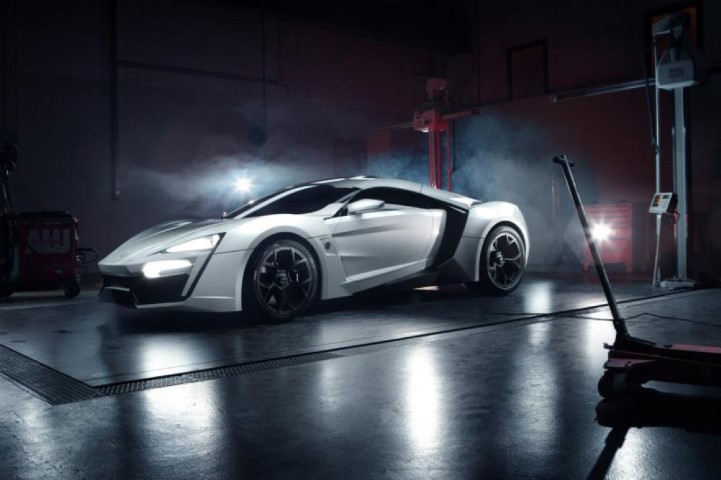

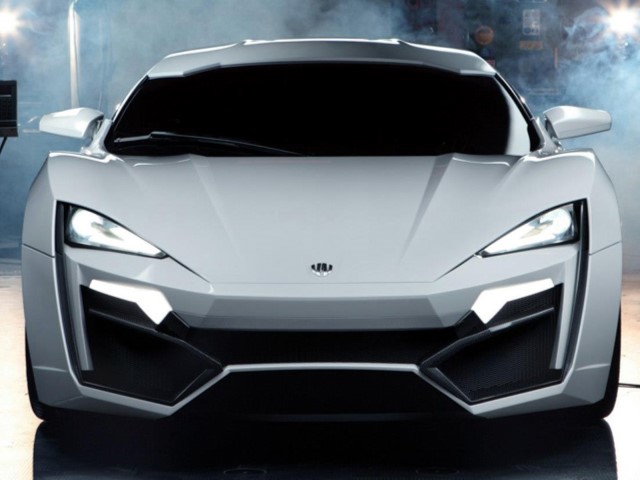





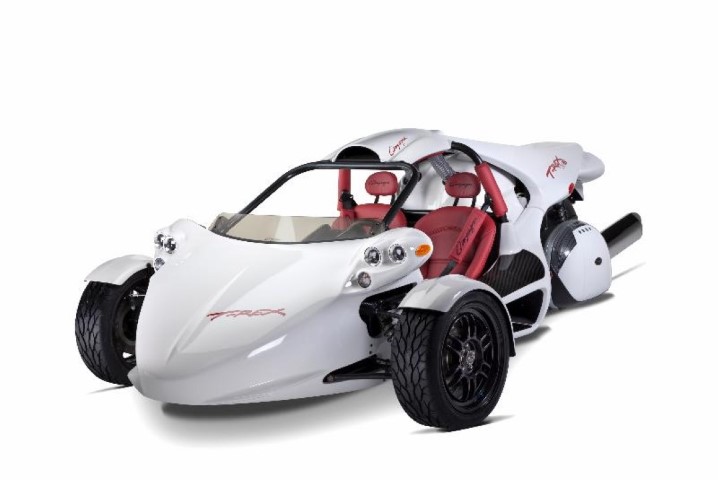
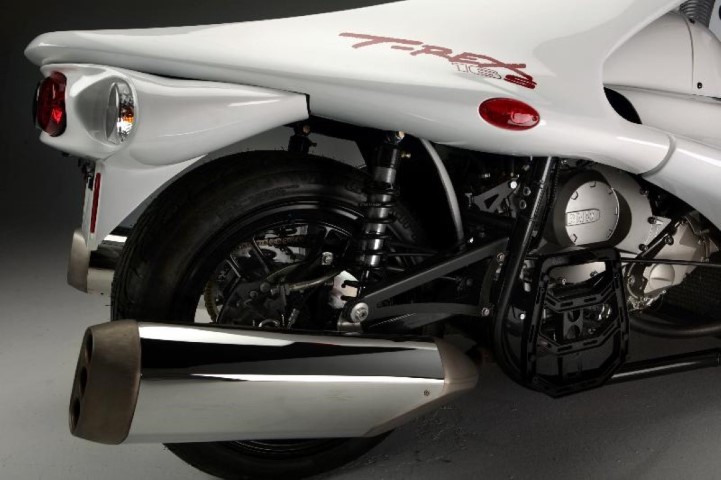
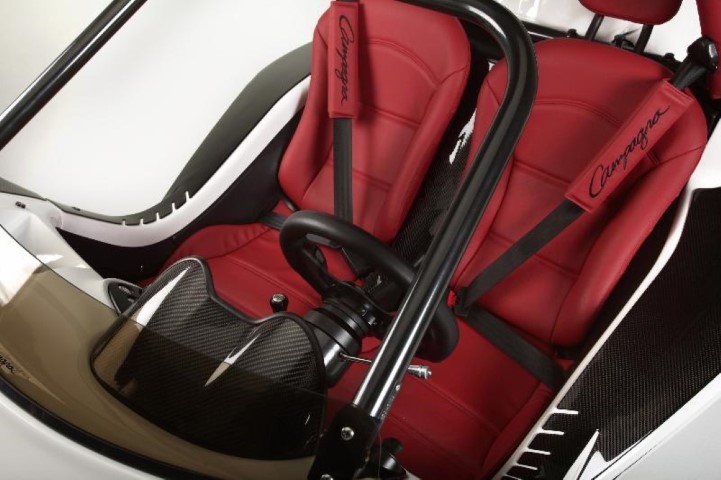
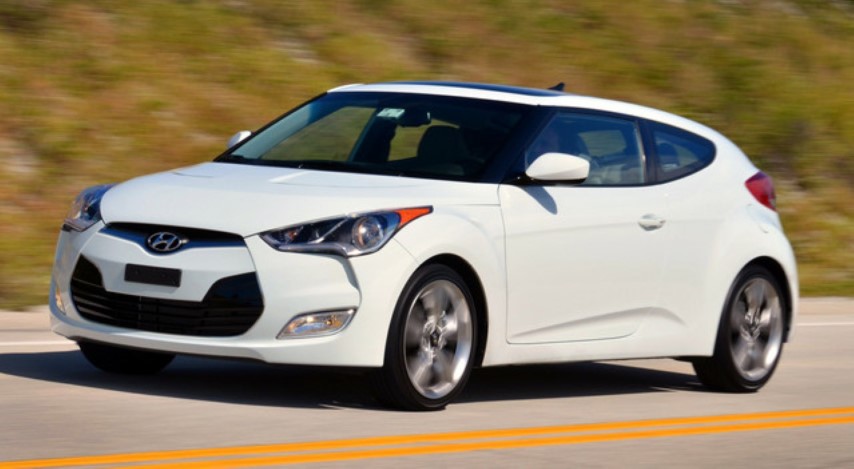
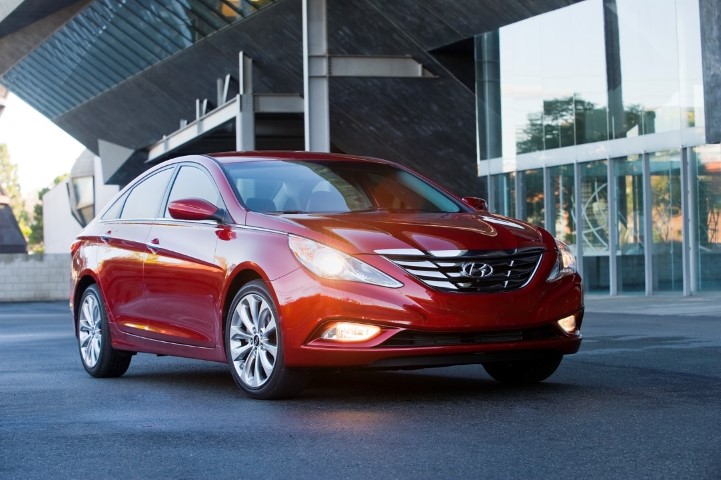

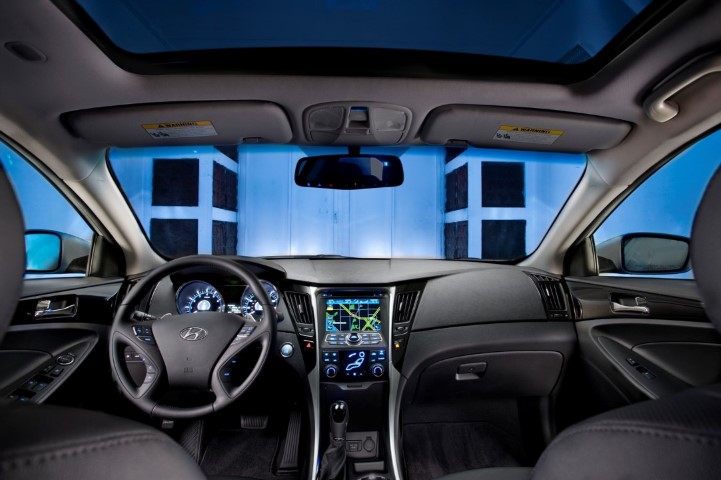

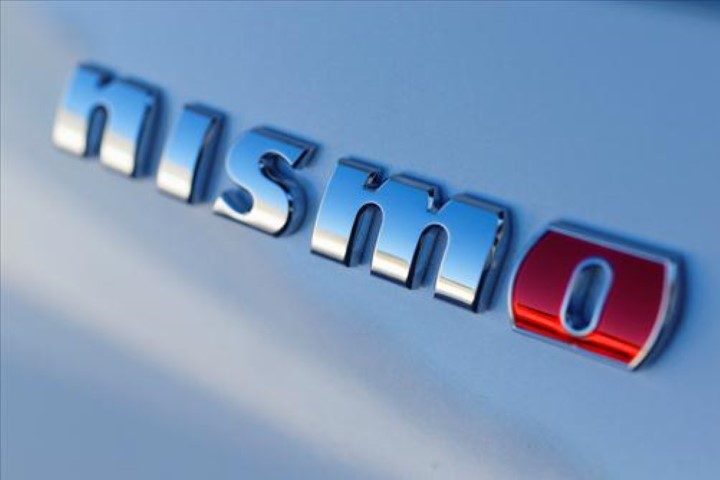 YOKOHAMA, Japan – Nissan Motor Co., Ltd. today kicked off a new era for NISMO, confirming it as Nissan’s exclusive global performance car and motorsports brand and officially opening the new NISMO global headquarters and development center in Yokohama, Japan.
YOKOHAMA, Japan – Nissan Motor Co., Ltd. today kicked off a new era for NISMO, confirming it as Nissan’s exclusive global performance car and motorsports brand and officially opening the new NISMO global headquarters and development center in Yokohama, Japan.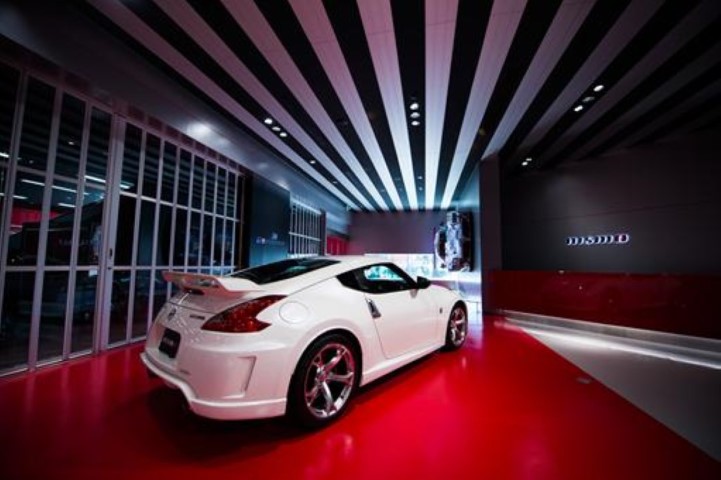
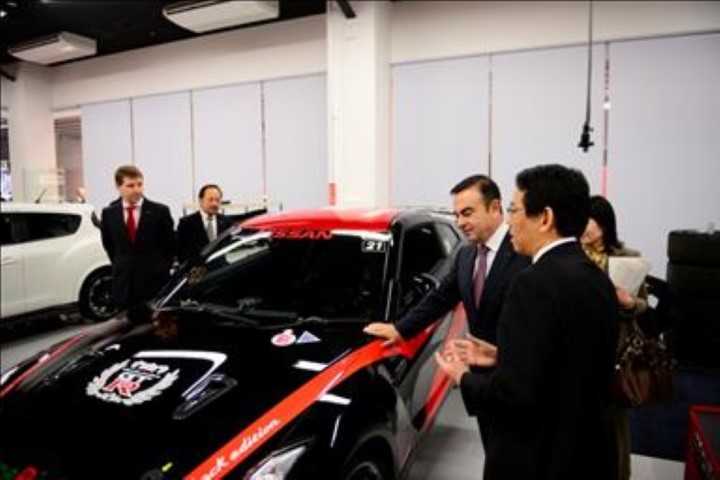
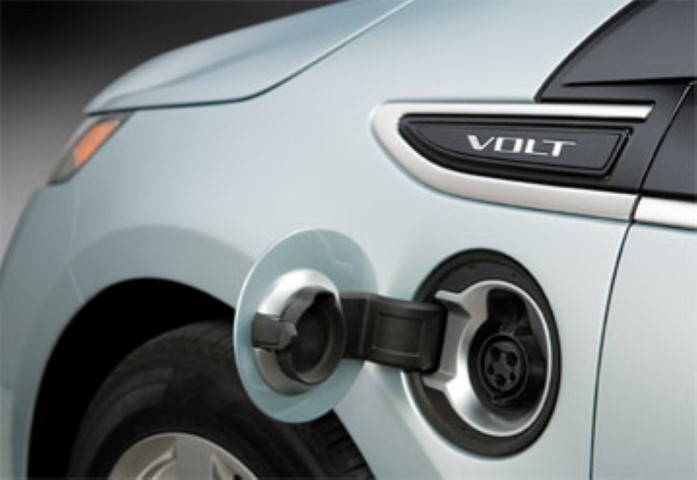
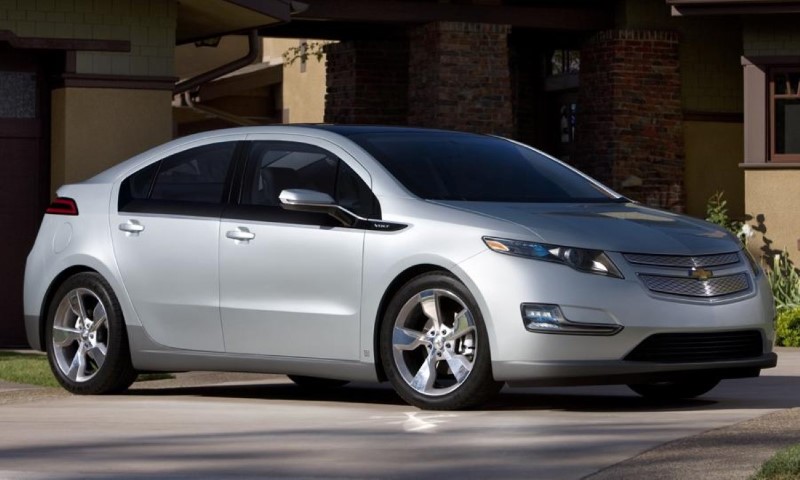
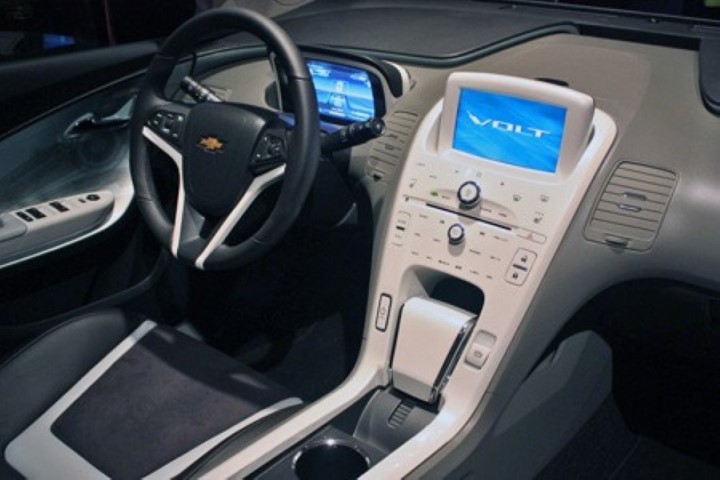
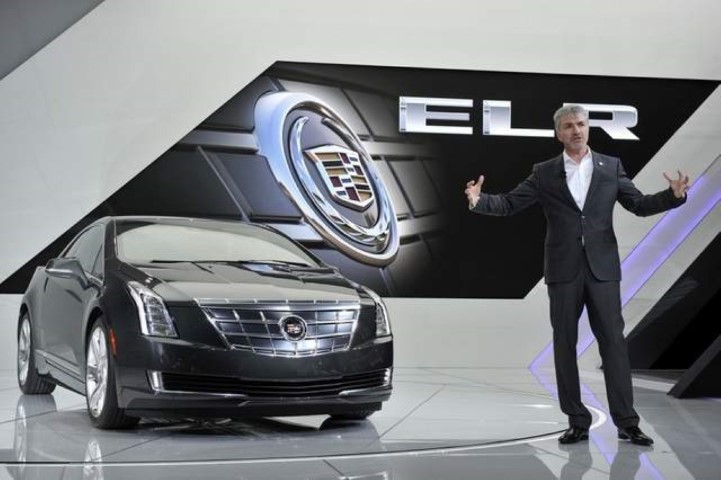
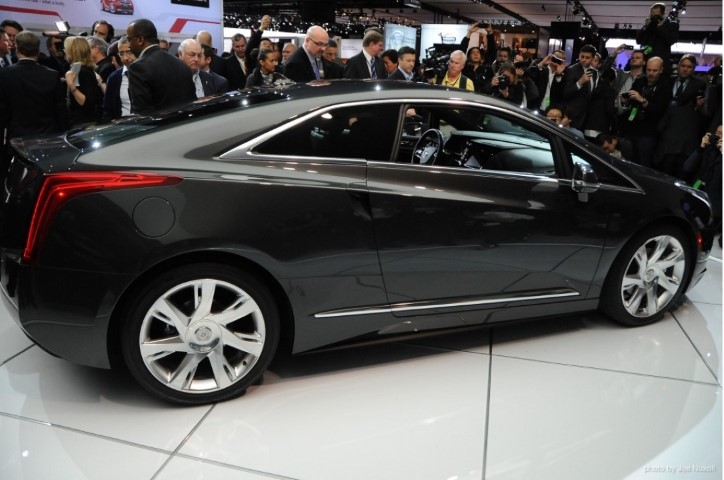
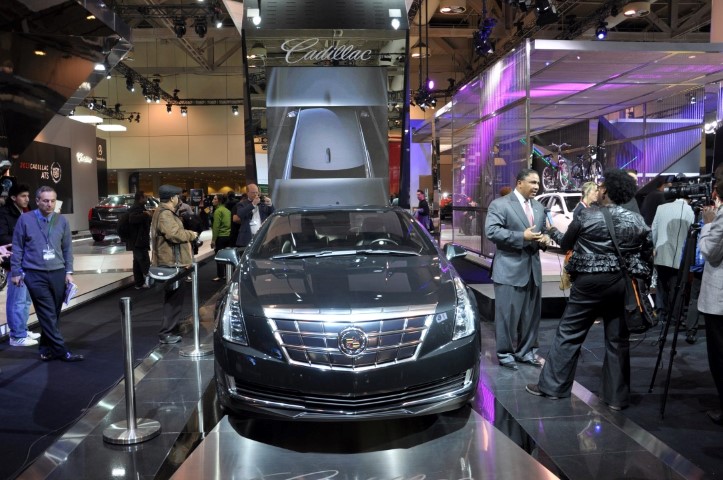
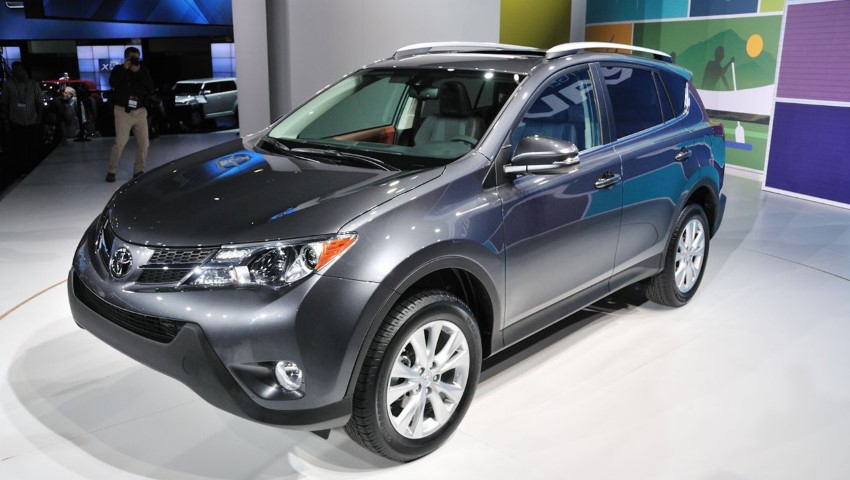


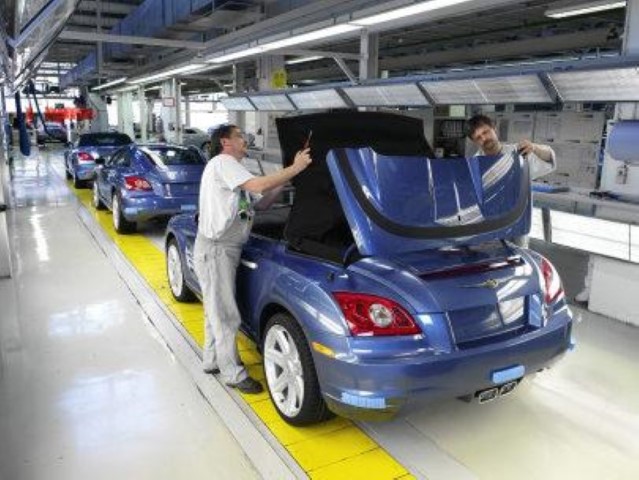
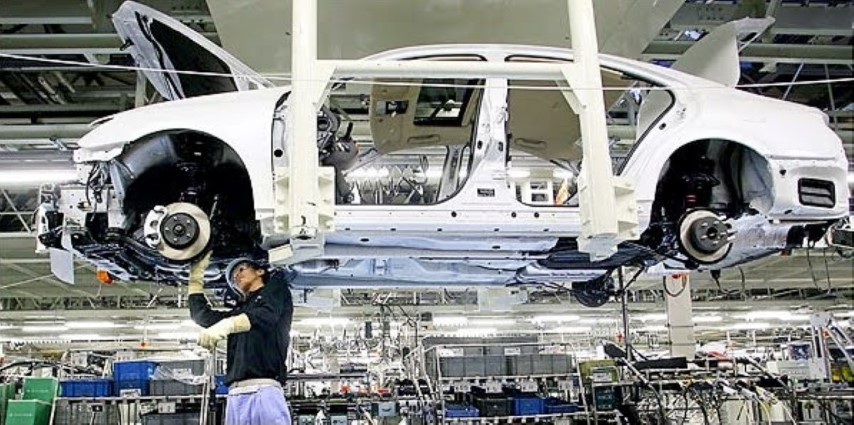
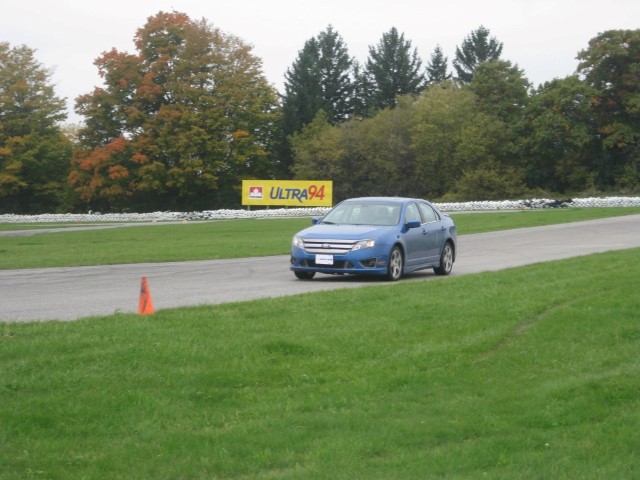 Handling and comfort is also vital when test driving your potential new vehicle. A skillful test driver on a high speed track will say it handles with some understeer or oversteer through the corners going 190 km/h. Those comments pay little attention to the actual comfort and atmosphere of the cabin on your everyday commute. What you need to look for are the parts of the review off the track in an everyday life setting. The exhilarating thrill of pushing a car to its limits does not make it a great car. The handling must be smooth and not performance-based. The cabin must be comforting and soothing, not made for the rough, agile lifestyles of race car drivers who must win at all costs. The goal is to overlook the smiles and thrilling screams of the commercials and track reviews and pay close attention when test driving a vehicle. You should feel comfortable sitting upright or slouching as you would after a long day. The handling shouldn’t differ on a rainy or snowy day. Test drive the car over bumpy and gravel filled roads and see if the vehicle loses control easily or if the suspension and quick response of the handling overcomes these obstacles. A vehicle might have great handling on a flat racetrack, but when taken to the practical streets of a city – does the verdict of the vehicle differ?
Handling and comfort is also vital when test driving your potential new vehicle. A skillful test driver on a high speed track will say it handles with some understeer or oversteer through the corners going 190 km/h. Those comments pay little attention to the actual comfort and atmosphere of the cabin on your everyday commute. What you need to look for are the parts of the review off the track in an everyday life setting. The exhilarating thrill of pushing a car to its limits does not make it a great car. The handling must be smooth and not performance-based. The cabin must be comforting and soothing, not made for the rough, agile lifestyles of race car drivers who must win at all costs. The goal is to overlook the smiles and thrilling screams of the commercials and track reviews and pay close attention when test driving a vehicle. You should feel comfortable sitting upright or slouching as you would after a long day. The handling shouldn’t differ on a rainy or snowy day. Test drive the car over bumpy and gravel filled roads and see if the vehicle loses control easily or if the suspension and quick response of the handling overcomes these obstacles. A vehicle might have great handling on a flat racetrack, but when taken to the practical streets of a city – does the verdict of the vehicle differ?
